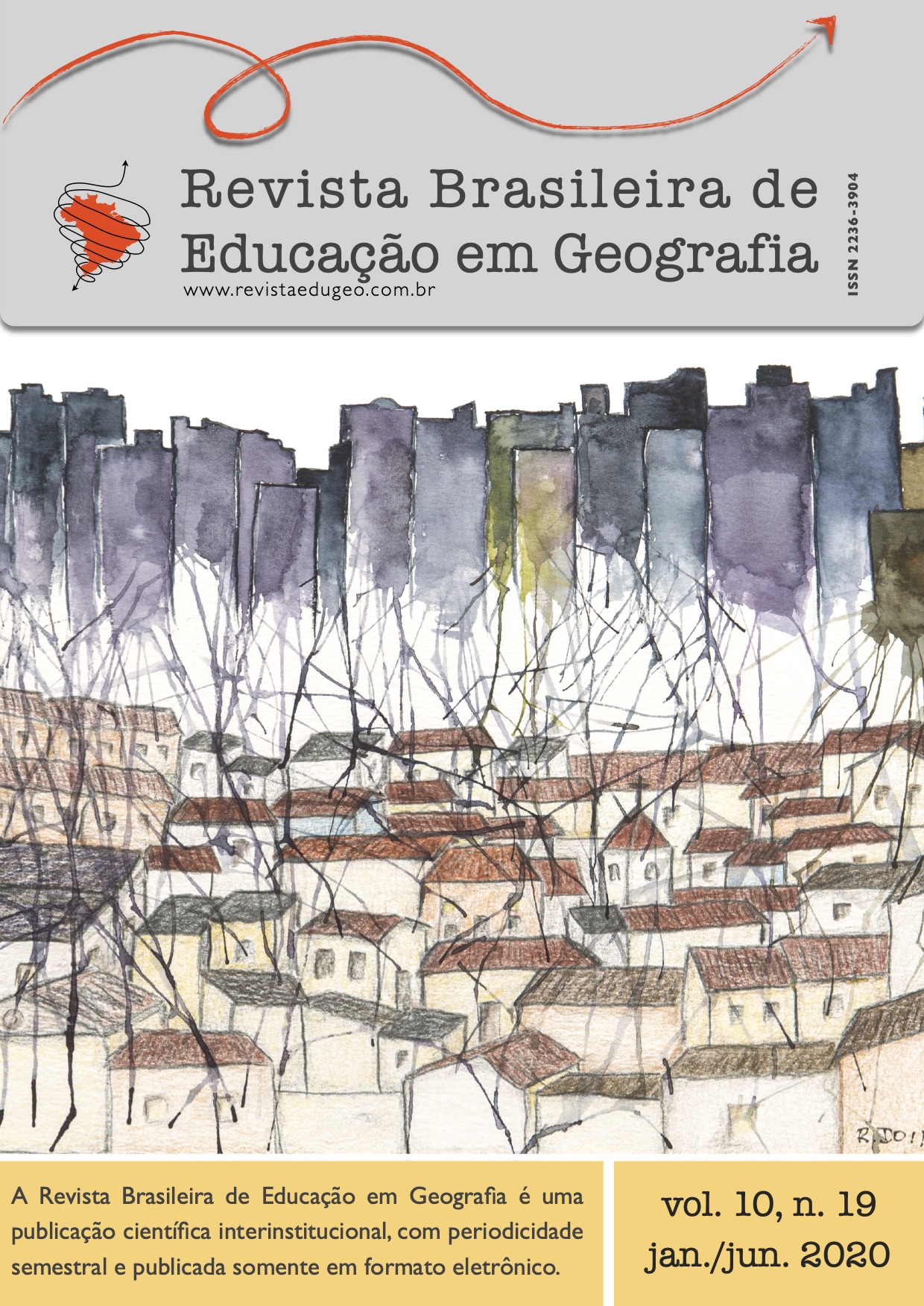THE PHYSICAL-NATURAL THEMES IN THE PUBLIC SCHOOL GEOGRAPHY TEXTBOOKS:
a case study of Uraí/PR
DOI:
https://doi.org/10.46789/edugeo.v10i19.751Abstract
The mission of Geography in teaching is to teach students how to read the geographic space, in its various scales and dimensions, in particular Physical Geography, which refers to the study of the Earth's natural dynamics and the derivations arising from anthropic action on nature. There are several studies that have questioned the didactic treatment given to the physical themes of Geography, both in the teaching practices adopted by teachers in the classroom, and in the didactic materials. Therefore, this study aimed to analyze the approach to physical-natural content in the Geography textbooks of Elementary Education II, used in State Schools in the municipality of Uraí, state of Paraná. Methodologically, the research was carried out by reading specialized bibliographies on the subject; preparation of an evaluation form for textbooks; evaluation of the Geography textbooks of Elementary Education adopted in the State Schools of Uraí-PR. In this research, there is a predominance of the traditional approach to physical-natural content, with a focus on describing the natural picture of the planet, with little or no connection with human activities and environmental impacts.
Keywords
Physical geography, Nature, Environmental issue
Downloads
Downloads
Published
How to Cite
Issue
Section
License
Proposta de Aviso de Direito Autoral Creative Commons
1. Declaro que o presente artigo é original, não tendo sido submetido à publicação em qualquer outro periódico nacional ou internacional, quer seja em parte ou em sua totalidade. Declaro, ainda, que uma vez publicado na Revista Brasileira de Educação em Geografia, o mesmo jamais será submetido por mim ou por qualquer um dos demais co-autores a qualquer outro periódico. E declaro estar ciente de que a não observância deste compromisso submeterá o infrator a sanções e penas previstas na Lei de Proteção de Direitos Autorias (Nº9609, de 19/02/98)
2. A Revista Brasileira de Educação em Geografia tambem segue a "Proposta de Política para Periódicos de Acesso Livre".
Autores que publicam nesta revista concordam com os seguintes termos:
- Autores mantém os direitos autorais e concedem à revista o direito de primeira publicação, com o trabalho simultaneamente licenciado sob a Licença Creative Commons Attribution que permite o compartilhamento do trabalho com reconhecimento da autoria e publicação inicial nesta revista.
- Autores têm autorização para assumir contratos adicionais separadamente, para distribuição não-exclusiva da versão do trabalho publicada nesta revista (ex.: publicar em repositório institucional ou como capítulo de livro), com reconhecimento de autoria e publicação inicial nesta revista.
- Autores têm permissão e são estimulados a publicar e distribuir seu trabalho online (ex.: em repositórios institucionais ou na sua página pessoal) a qualquer ponto antes ou durante o processo editorial, já que isso pode gerar alterações produtivas, bem como aumentar o impacto e a citação do trabalho publicado (Veja O Efeito do Acesso Livre).







